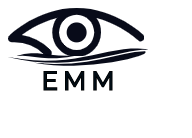Different methods to measure inter-pupillary distance
Inter-Pupillary Distance (IPD) is a crucial measurement in eyewear fitting, ensuring optimal lens alignment and visual comfort. Various methods exist to measure IPD, each with its advantages and suitability for different settings. Following are the different methods to measure inter-pupillary distance: 1. Manual Measurement Manual measurement is a traditional method where a ruler or pupillometer…
